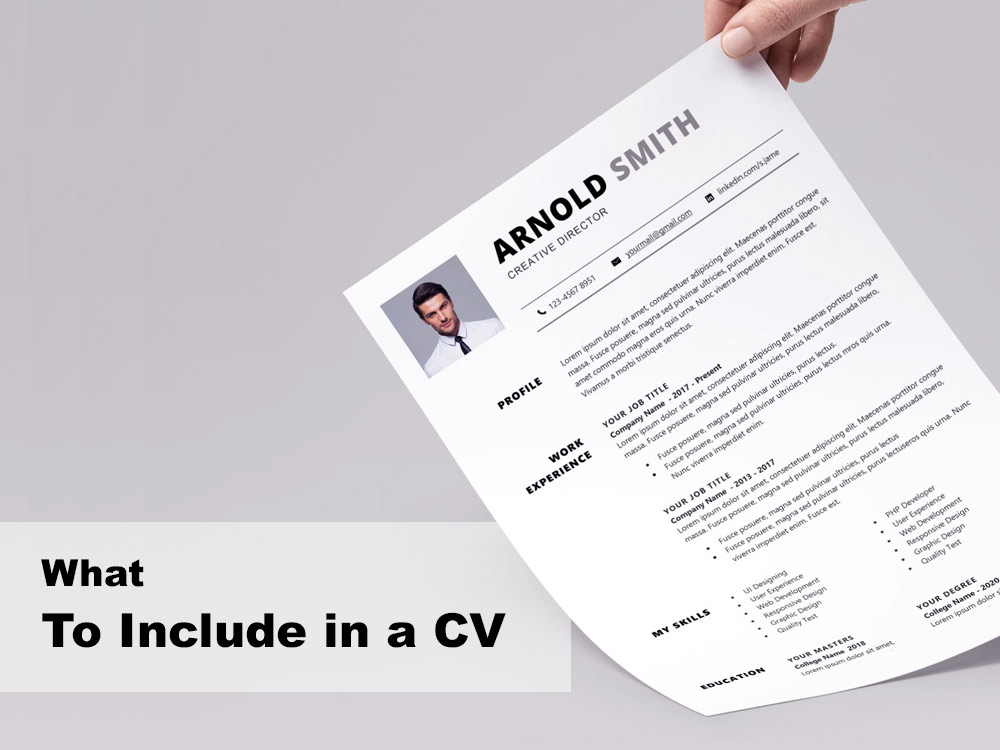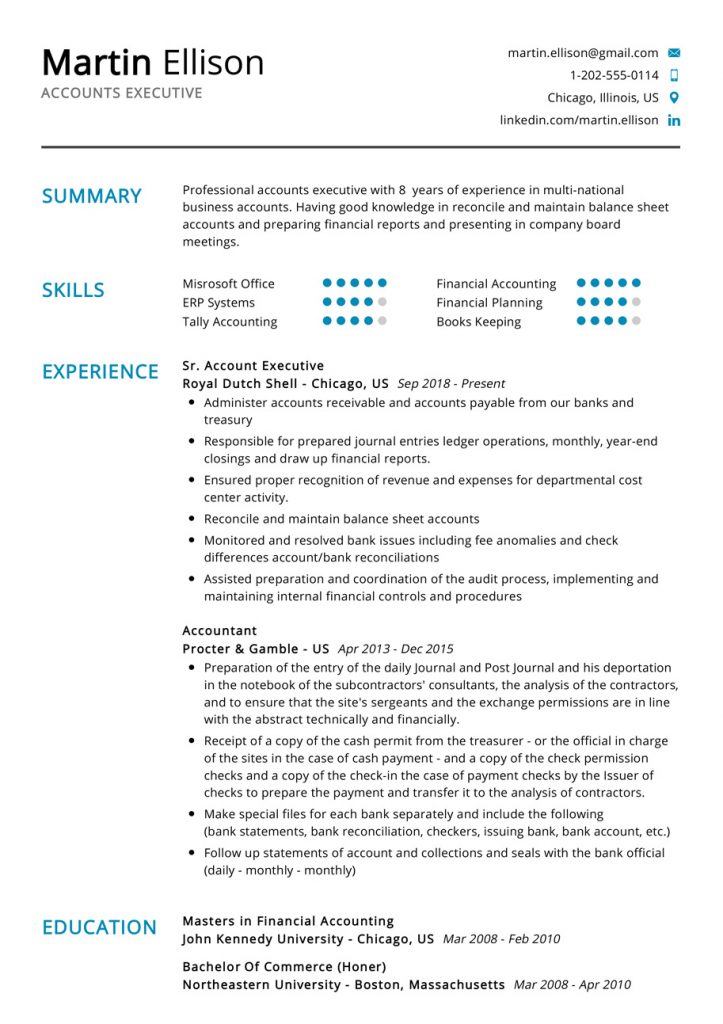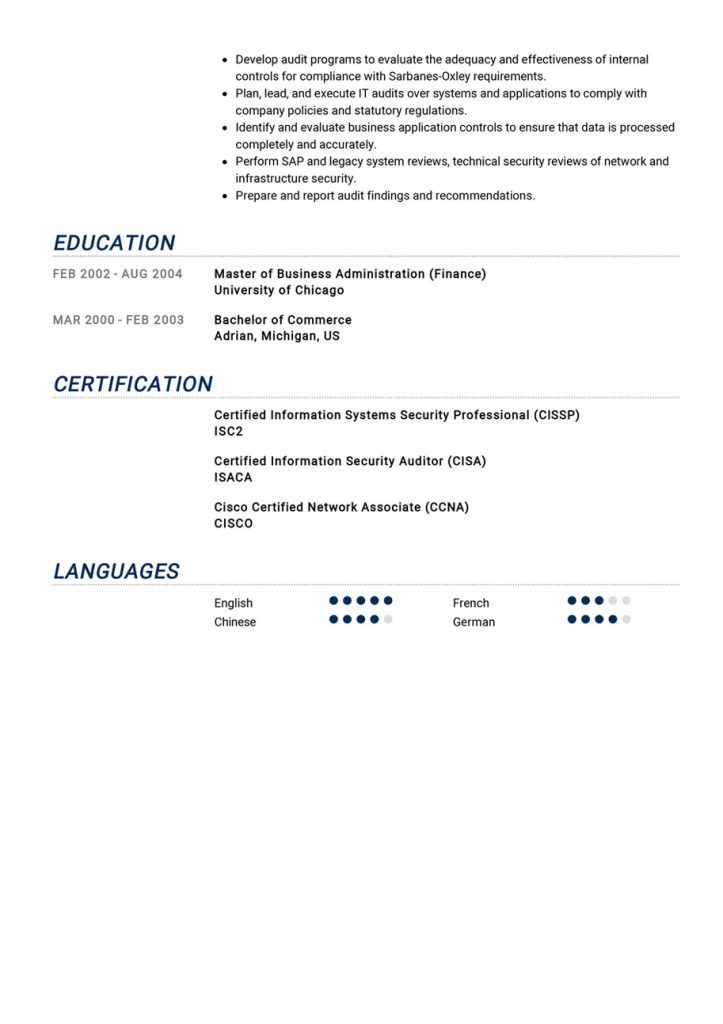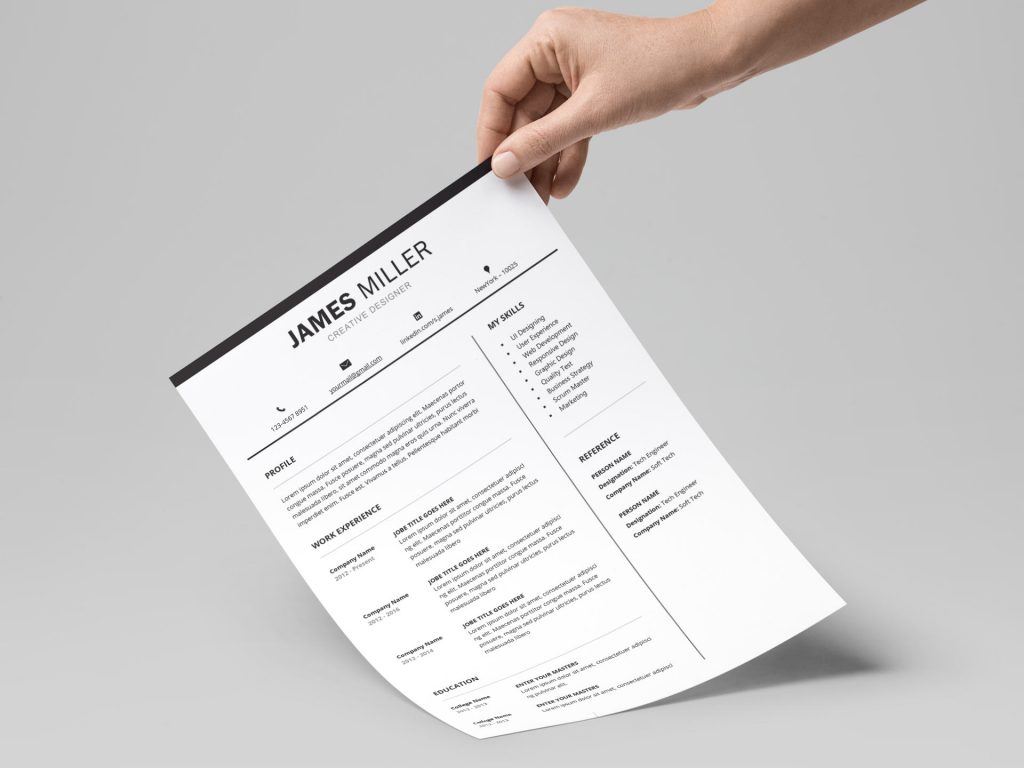
When you apply for a job, the CV that you send off with your application is going to determine whether or not you make it through to the next round. While we can’t necessarily change the things that are on (or not on) our CV, we can absolutely make sure that what we are presenting is the best possible version of itself. If you need a little support, here’s what you should know about your CV format.
What is a CV?
This is the abbreviation of curriculum vitae and it means that you are highlighting your experience and accomplishments as they pertain to the job in which you’re applying. This is very similar to a resume, but a CV is typically what is used outside of North America in job applications and formatting explanations.
Create your professional resume for free using our resume builder!


The absolute must-haves in your CV
There are a few types of CVs out there and you can decide what format to choose based on the information that you’ve got to put on it (or lack there-of) as well as the position for which you are applying. Here’s what you will always need to make sure is present:
- Your contact information: At the top of every CV template and example that you see is the contact information. This should be accurate, up to date and, of course, typo-free. Make sure you choose channels that you are comfortable being contacted on.
- A succinct, polished professional statement: A professional statement should also be near the top of the CV. You’ll want to focus this on who you are, what you are looking for, and why you make a great candidate for the job. This should be no longer than a short paragraph.
- A section with your core skills and abilities: Make sure you include professional skills as well as abilities. This should be focused on the ones that are most relevant to the job, of course. Work from most relevant to least relevant.
- Past work experience and why it matters: You’ll want to also include professional experience on the CV. This shows what you’ve done as well as why your potential employer cares about it (what you learned from it that you can now take to them).
- Education and certifications: You’ll also want to take the time to list your education (including high school if relevant) and any associated certifications or awards that will show them how dedicated you are to doing things properly. It should go without saying, but don’t fudge details that aren’t accurate. If you didn’t get a 3.7 GPA, don’t say that you did. Those details can be fact-checked and will immediately disqualify you if you fudged them.

Try our Free CV builder to create Job winning CV in just 5min.
Tips to help with your CV format:
Other than making sure you’ve got the right skills and professional experience listed, there are also some details that you should think about simply in the formatting and the form of the CV itself.
- Try to keep it to 2 pages or less: When you’ve got al long list of skills, professional experience, and education, your CV can be upwards of 3 or 4 pages. While it’s great to see your accomplishments all laid out like that and it is important to note, it’s also important that your CV, you know, gets read. Since recruiters are busy and don’t have time to flip through all 4 pages, you’ll want to do your absolute best to keep it to 2 pages or less. If it must be 3 pages (that is the unofficial maximum), make sure you’ve got all of the critical details on pages 1 and 2 just in case they don’t get around to page 3.
- Keep the format simple and sweet: The format that you use is also recommended to be simple and to the point. No fancy fonts or flowery language. This is intended to tell your core details and important features that make you useful to them. They will not (and should not) appreciate how pretty your CV looks.
- Research the different kinds of CV: Just like a resume, there are different kinds of CVs that you can create. A chronological resume is a carefully organized roadmap of where you’ve been in terms of work experience and education. This is great for those that have targeted experience and want to show it off. It’s not so great for those that have work gaps or don’t have much experience in the field of the job they’re applying for. A functional CV is going to put its effort into how you’re useful to them regarding skills and certifications, education and a few work details. The focus is more on you as a professional person rather than your work history. Lastly, a combination CV helps you combine work experience with a chronological appeal to the functional form and play both against each other to show them that you’re the real deal in all of the important features.
- Use a CV template: When you’ve chosen a CV format and the time is now to actually put it together, do yourself a favor and use a CV template. There are all sorts around and you’ll be able to use it to guide you in making sure that one part isn’t too big or too small or that it looks strange or, even worse, it’s unprofessional. Templates are available in a few forms, too, so that you can get the one that looks professional but still feels like you.
Give yourself a leg up on the competition by putting together a CV that is honest, authentic and exactly what the recruiter is looking for. You know that you’re the best person for the job and if you put that kind of enthusiasm and focus into the CV in all of its details, you’ll convince them as well, and that’s what applying for a position is all about. Put the proper effort into your CV and it’ll get you to the next stage of interviews faster than a little extra padding would
Frequently Asked Questions
The answer to this question depends on your experience and the job you are applying for. If you have a lot of experience, you may want to make your CV longer. If you are just starting out, you may want to make your CV shorter.
You should include your name, address, email, and phone number at the top of your CV. You may also want to include a photo of yourself.
You should include the name of the school you attended, the type of degree you earned, and the year you graduated.
In the experience section, you should include the names of the companies you have worked for, your job titles, and the dates you worked there. You should also include a brief description of your duties and responsibilities.
In the skills section, you should include a list of the skills you have that are relevant to the job you are applying for.
In the interests section, you should include a brief description of your hobbies and activities.
There is no one correct answer to this question. You may want to use a chronological, functional, or hybrid format.
There are a few things you can do to make your CV stand out. Use clear and concise language. Use bullet points. Highlight your skills and experience.
There are a few things you should avoid when writing your CV. Avoid using flowery or overly descriptive language. Avoid using clichés. Avoid making any grammar or spelling mistakes.
You should update your CV every time you have a new job or experience to add.
Check our Free CV builder to create Job winning CV in just 5min.

